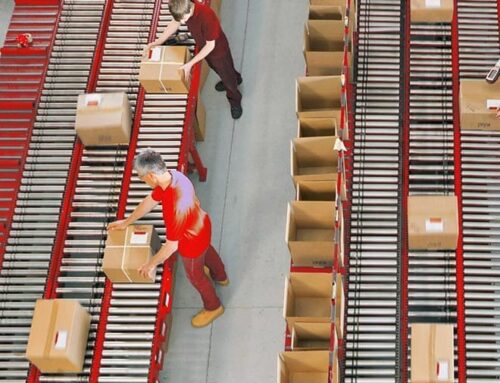Automating your warehouse means navigating a lot of options.
Which vendor has the technology you need?
Which solution is right for you?
Is this plan going to protect your business and decrease your risk — or do the opposite?
To make the right decision for your warehouse, start by having a clear sense of where you’re coming from.
ISD partners with our customers to guide them to the automation plan that’s right for their specific size, products, customers, budget, and needs.
Here’s a set of 5 guiding questions, plus 10 level-down questions to help you make sense of your operations’ metrics, that we use when exploring automation solutions for our customers.
Once you’ve gone through the 5 questions, you’ll have a strong sense of what’s driving you to automate and what problems you need automation to solve for you.
And if you’d like to talk through these automation questions with an automation expert, set up a free call with our team.
5 Questions to Ask Yourself Before Implementing Warehouse Automation
1) What problem am I trying to solve?
2) Am I maximizing my current space?
3) Is my inventory right-sized for my operation?
5) What will be the financial impact on operation improvements?
Making the decision that’s right for you
1) What problem am I trying to solve?
This question is the most important one to consider before implementing warehouse automation. It’s asking “What is your goal in automating your warehouse?”
Based on your answer, your path to automation will follow a different route. The majority of distribution centers considering automation are looking to improve on an existing operation, whether that’s by designing the most productive new space or by maximizing their current space.
So what problems are you trying to solve?
Your answer could be:
- I don’t have enough space in my warehouse.
- I need to be able to ship faster to keep up with competitors.
- I want to offer more inventory but my operation can’t scale with it.
- I’m facing higher costs up and down the supply chain and need to respond.
- My labor costs are too high.
- I can’t find the skilled labor I need.
- I have good labor, but they’re bogged down with time-consuming manual tasks, and I want their jobs to be better.
- I have to put out too many fires myself and need a system that helps me.
Sound familiar? Read on for more questions — and if you want to talk to an automation partner who knows where you’re coming from and is ready to help you find the right solution, talk to our team.
2) Am I maximizing my current space?
If you’re considering automation because you’re running out of space, or because you want to reduce your spend on expenses like rent, it’s a good idea to take a close look at how you use the space you have.
ISD has helped customers design new greenfield warehouses, but also consolidate two distribution centers into one that could ship more products with a smaller footprint.
More space isn’t always the option, but smarter space might be.
Explore whether you’re maximizing your current space by asking:
- How much square footage does my warehouse have?
- How much of that square footage is in use currently?
- What is my ceiling height, mezzanine size, and racking square footage?
To go through those questions with an ISD operations expert, for free, schedule a consultation today.
3) Is my inventory right-sized for my operation?
If you have years’ worth of inventory taking up all your storage space, automating your distribution center won’t solve your problem. For that, you need to improve your procurement process.
To understand and improve inventory, apply the 80/20 rule. 20% of products should drive 80% of profit. What are your highest-margin, highest-performing SKUs? How are you improving those for volume and profitability, and reducing the amount of low-performing SKUs that take up outsized space?
To answer this question, you’ll need to know:
- Your number of SKUs
- SKU pick frequency
- SKUs that are non-conveyable
- SKUs that require lift assists or mechanical aids
- SKUs that require special handling or storage
- Growth of your SKU base
An operations engineer at ISD can help you go through this information and more. We start every engagement with a research project, where we dive deep on the specifics of your warehouse operation. Talk to an expert today.
4) Do I have a labor problem?
Wages keep rising. The U.S. Bureau of Labor Statistics found that wages and salaries went up 5.1% in 2022 and 4.3% in 2023.
But it’s not just that it’s expensive to pay workers. It’s also hard to find them.
Per the U.S. Chamber of Commerce, hiring rates are outpacing quit rates, but companies can’t keep up. That’s especially true in industries where work can’t be done in a remote or hybrid setting. In transportation and warehousing, 80+% of work is done fully on site.
If you’re having trouble finding qualified labor, automation can help by reducing the manual labor needed to get shipments out the door. Instead of a bigger pool of pickers and packers, you’ll have a smaller pool of trained operators who interface with technology that does the majority of the heavy lifting.
Consider these statistics from ISD case studies:
- An automated storage and retrieval system (AS/RS) reduces labor requirements by 65%
- Picking automation can reduce labor costs by 25-60%
- In an automated system, as few as 5 employees can handle 10,000 SKUs and 5,000 orders per day in less than 825 square feet of warehouse space
5) What will be the financial impact on operation improvements?
Distribution centers aren’t cost centers — they’re profit generators.
That’s true, but it requires looking at operations in the way that C-suite leaders do: as an opportunity to retain more money.
By optimizing your operation, you can reduce your number of returns and negative customer experiences.
Looking just at errors — not the lost customer value of disappointing a customer who never comes back — the lost profit is staggering.
Errors cost you $50 each on the low end, and $300 each on the high end.
If automation can get you from a 98.9% order success rate to 99.2%, that 0.3% of improvement is saving a warehouse with 5,000 orders a day from making 15 unnecessary errors each day.
At an average cost of $175/error, that’s $78,750 of profit regained each month.
Improvements like that will pay for automation many times over.
Making the decision that’s right for you
Warehouse automation is a big decision. It requires financial investment, time, focus, and trust.
At ISD, we’re ready to get started on designing the automation roadmap that’s right for you. Our product-agnostic approach means we don’t start with ready-made solutions. We start by listening, understanding, and putting your needs first.
Let’s build the warehouse of tomorrow together. Talk now.






